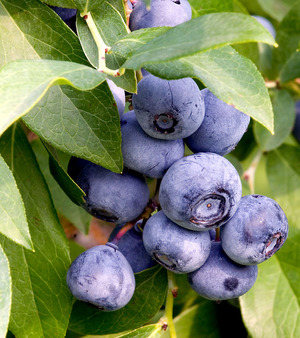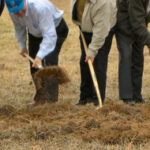Blueberries are a delicious fruit that is delicious and healthy for you. Yes, you can buy the blueberries in the grocery store, but the prices that you have to pay will almost buy you a blueberry bush. If you had your own blueberry bush, then you would have fresh blueberries to pick right off the tree. How spectacular does that sound?
Okay, it may take three years before your blueberry bush will provide you with fresh blueberries, but when it does start producing, be prepared to receive 1 to 3 pounds of fruit per shrub during the months of July to August. There are different varieties of blueberry plants to choose from. Outdoors they are hardy in USDA zones 2 through 6, but you can also find blueberry bushes that grow indoors. Choose the one that best fits your needs and space. The flowers of the blueberries invite butterflies and bees to the garden area.
When you get your blueberry plant, you’ll need to find the right location to plant it if you are going to grow it outside. When choosing a spot, there are two places to avoid planting your blueberry shrub. Do not plant close to junipers, or close to house foundations or walls with lime foundations, because the soil will mess up the ph level. Blueberries need a neutral soil for best growth.
Prepare the Planting Site
Blueberry shrubs prefer to grow in a sunny area without any competition from other plants or trees, because they take away the moisture and nutrients that the blueberry bush needs. Clear out a 4 foot diameter circle.
Prepare the soil where you want the blueberry shrub to grow. You may want to test the soil three months before planting the blueberry plant. If the pH level is too low, add some lime to the soil. For a pH level that is too high, add some sulfur. Mix either of these elements into the top 4 inches of soil.
Dig the Planting Hole
Dig the planting hole with a spade or shovel. The hole should be twice the depth and width of the container. Scuff the bottom and sides of the planting hole with the edge of your shovel or spade. This helps the roots to go beyond the boundaries of the hole. Amend the soil removed from the planting hole with peat moss. You’ll want to have equal amounts of peat moss and soil.
It is a good idea to fill the hole with water before you plant the blueberry shrub. This ensures that the moisture goes deep into the soil. Allow the water to drain away naturally into the soil.
Prepare the Root Ball
Remove the blueberry shrub from its container. Examine the roots at the bottom and sides of the root ball. If the roots are visible, gently tease them away so they will grow into the soil. If left as they are, the roots will continue to grow around the root ball and choke it to death.
Backfill the hole with amended soil until it is slightly over half full. When you place the root ball into the hole, it should be a fourth to a half-inch above ground level. The soil beneath the root ball will settle over time and the root ball will be level.
Plant the Blueberry Bush
The root ball should be positioned in the center of the hole, then backfill in around the root ball with amended soil. Firm the soil in place with your hands or the back of the spade or shovel.
Lay the water hose nearby the blueberry shrub with the water turned on a slow flow. Allow the water to run until the blueberry is thoroughly watered.
To help the soil retain moisture, lay 3 to 4 inches of organic mulch around the plant. Keep the mulch at least 2 inches away from the bark of the blueberry otherwise disease could result. The mulch will break down into the soil through the seasons and it also helps prevent weeds from growing.
After Care
Blueberries like to grow in a soil that is moist but not soggy. Once a week, water the blueberry bush, unless ample rain has fallen, by giving them an inch of water. If the weather has been overly hot or windy, they may need to be watered more often.
Fertilize your blueberry shrub in the spring. Feed them once a month after that, skipping the month of July. Feed once more in August, and then hold off on fertilizing until next spring. Choose a fertilizer made for rhododendrons, or azaleas
For the first two years, cut off all the blossoms. This will be a hard thing to do, especially when you are hungry for blueberries, but resist the urge to forgo this step. On the third year, allow the flowers to remain on the shrub and bear fruit. Your blueberry shrub will have more blueberries as a result.
Growing Blueberry Shrubs in a Pot
If you choose to grow the blueberry plant in a pot, choose a dwarf or low bush blueberry shrub. Plant the blueberry in a potting soil made for rhododendrons or azaleas. The soil needs to be constantly moist, but never waterlogged. Care for the potted blueberry as you do one planted in the ground.
Reference
Buy Blueberry Bushes: Grow Your Own Blueberries
Nova Scotia Agricultural College: Growing Wild Lowbush Blueberries in Nova Scotia
University of Maine Cooperative Extension: Wild Blueberry
Michigan State University: Michigan Lowbush Blueberries
Gardening Guides: Grow Blueberries




